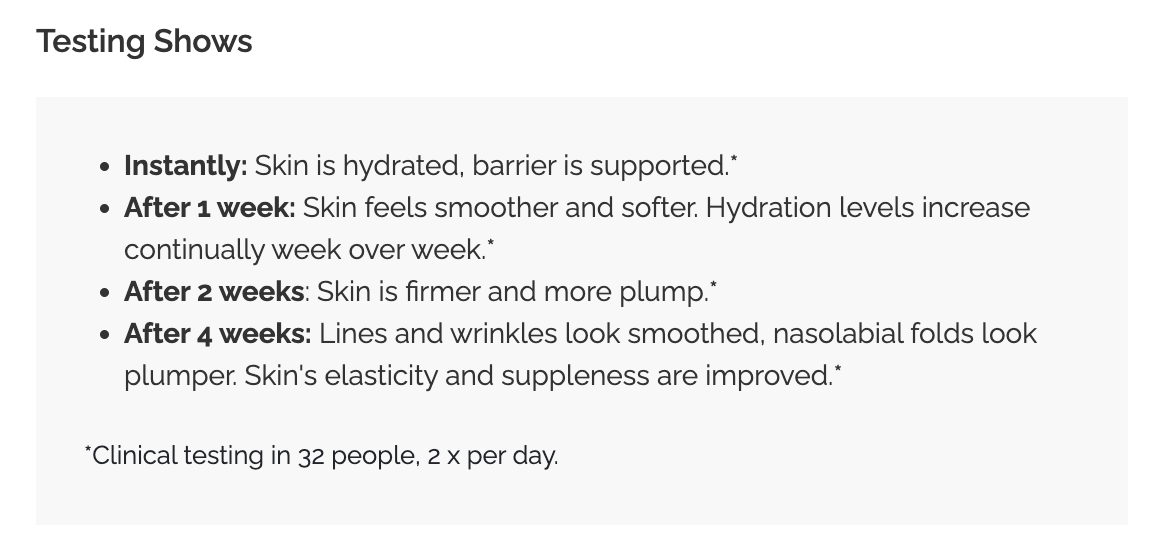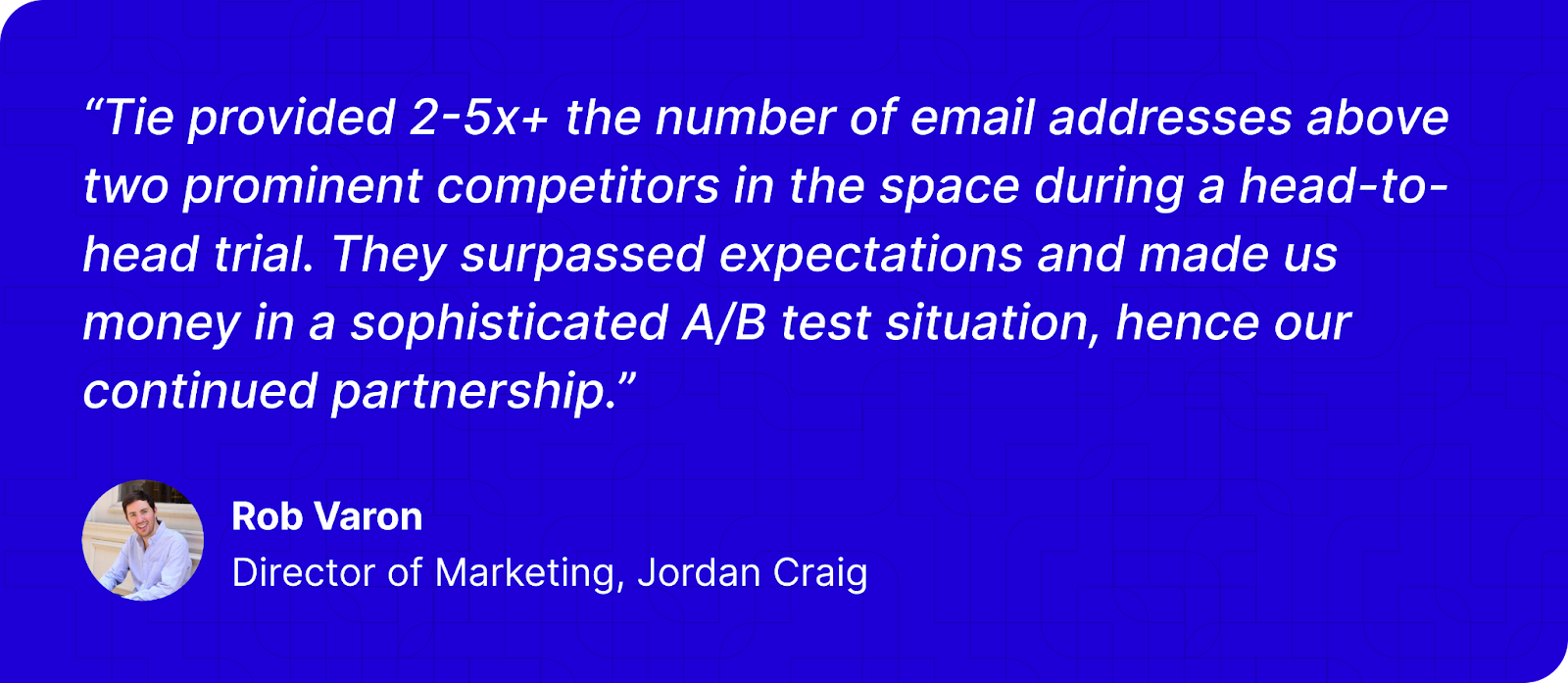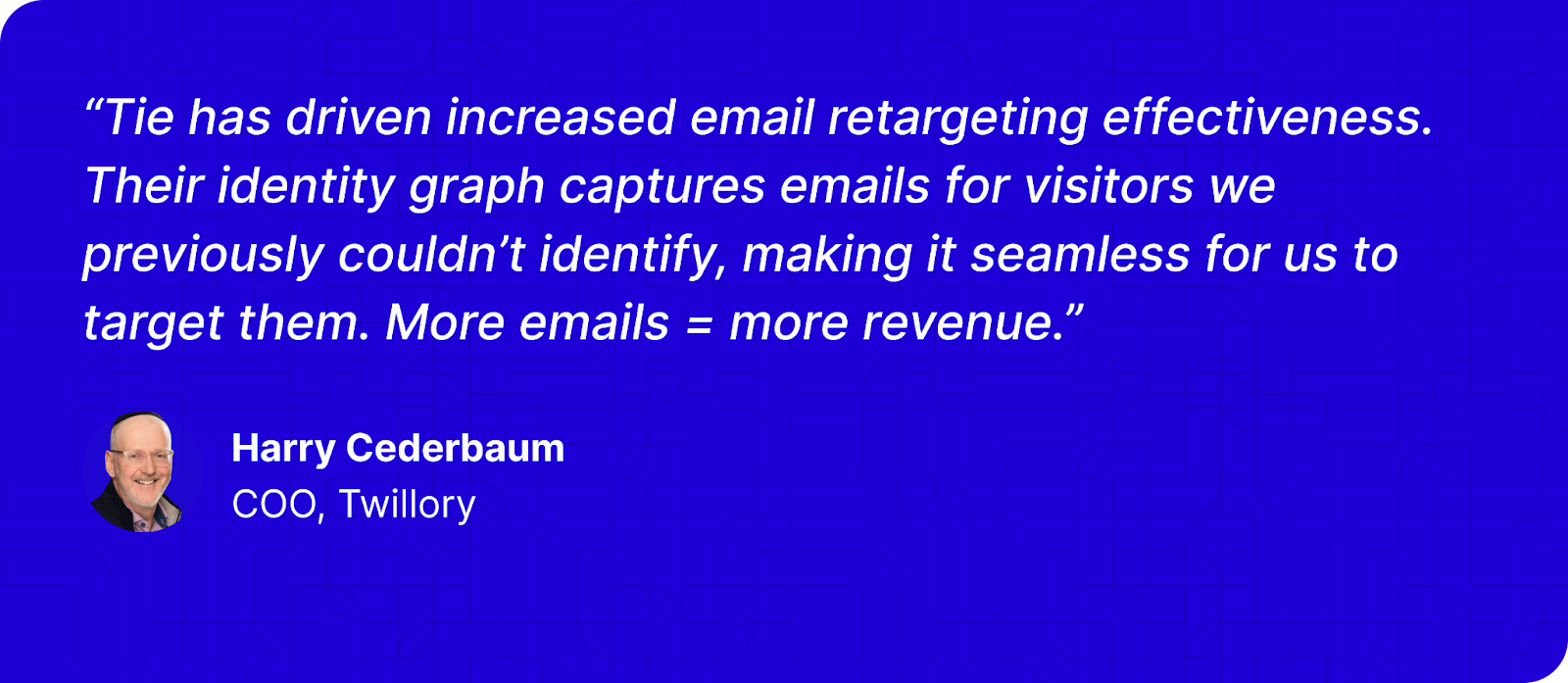Converting Website Visitors to Leads: Strategies and Best Practices

The average conversion rate for ecommerce is around 2.5% to 3%, meaning that most of your website traffic isn't converting on their first visit.
Without strategies to effectively re-engage your web traffic, you're losing potential customers and wasting marketing spend. What’s worse, most people who land on your website stay anonymous, making it tricky to identify them and bring them back.
In this guide, we’ll break down practical strategies to help you identify who your website visitors are, understand their intent, and set up an optimized conversion path that turns them into customers.
Why you’re having trouble converting website visitors to leads
If you're driving traffic but not seeing purchases or form fills, there could be many reasons why visitors are not taking the next step. Whether it’s poor targeting, friction in the user experience, or a lack of trust, these issues quietly kill your lead conversion rate. Here’s a breakdown of what might be going wrong.
Attracting unqualified traffic
Not all website visitors are relevant to your business. If your marketing campaigns bring in people who don’t need your product or service, they’ll leave without engaging.
You may be driving irrelevant traffic to your site in a few ways:
- Unoptimized keywords: Your SEO strategy focuses on high-traffic but low-relevance keywords that don’t align with your ideal customer.
- Poor ad targeting: Your ads target broad and misaligned audiences instead of refining by audience intent or behavior.
- Weak messaging: Your headlines and ad copy may be weak or misleading, attracting visitors who come in with expectations that you can’t fulfill.
As a result, you attract people who never intended to buy, lowering your conversion rates and making your funnel less effective.
Anonymous visitors
Most visitors land on your webpage, browse for a bit, and leave without filling out a contact form or making a purchase. In fact, 98% of website traffic is completely anonymous.
If you can’t identify them, you can’t follow up.
Here’s why this happens:
- Poor website journey: Your website design doesn’t encourage engagement early on, lacks CTAs, and creates too many drop-off opportunities. If the next step isn’t obvious, visitors won’t take it.
- Lack of urgency: Visitors don’t feel the urgency to act. Without compelling lead magnets or time-sensitive offers, they assume they can return later, but they rarely do.
- Leads aren’t warm enough: Many visitors are in research mode and not ready to buy. If you don’t capture their interest at this stage, they’ll likely go with a competitor when they’re ready to purchase.
- Inability to identify anonymous visitors: You don’t have the right tools to enrich anonymous visitor data, identify them, and effectively re-engage them back to convert.
Poor site experience
Your website traffic won’t convert if visitors struggle to navigate through your site. A slow or confusing user experience makes people leave before they can become leads.
Common issues include:
- Slow page speed: If your site takes too long to load, visitors won’t wait. A few seconds of delay can mean drop-offs and lost conversions, especially on mobile.
- Not designed for mobile: If your homepage isn’t responsive to different devices, it might be hard for visitors to find key elements like your CTA, contact form, or pricing page that drive them to convert.
- Complex product pages: If visitors can’t quickly understand what you offer, they won’t bother trying. A cluttered layout, too much jargon, or unclear pricing can drive them away.
Lack of trust signals
Even if visitors are interested in your products, they won’t engage if they don’t trust your brand. A lack of credibility can make them hesitate to fill out a subscription form or make a purchase.
Prospects or shoppers have low trust in your website due to a few reasons:
- Lack of social proof: If your site lacks testimonials, customer reviews or case studies, visitors will be unsure whether actual customers have bought from you and enjoyed your products/services.
- No contact information: Without a phone number, chat support, or social media presence, visitors would doubt that a real business exists behind the website.
- Outdated or generic information: If it looks like your website copy or blog hasn’t been updated in a few months, visitors may assume your business isn’t active or credible.
Lack of retargeting strategies
In a typical customer journey, most visitors don’t convert on their first visit. Without any follow-up, they’re gone for good.
Here’s why this is a problem:
- People get distracted. They might have intended to check out your pricing or make a purchase, but they got pulled away and forgot.
- Competitors are reaching them first. If you’re not following up, another company is likely targeting them with ads or email marketing strategies.
- Visitors need multiple touchpoints before converting. Without retargeting, they don’t learn enough about your products to build preference and conviction, ultimately having less reasons to return.
Lack of testing and optimization of the conversion funnel
Even if your site is getting leads, you might be missing out on a much higher lead conversion rate simply because your website journey is poor.
This happens when:
- You don’t analyze drop-off points to see where visitors lose interest. Without tools like Google Analytics, you have no idea why shoppers aren’t moving forward.
- There’s no A/B testing on your landing pages, so you’re using guesswork to understand which CTAs, headlines, and offers work best.
- You’re not using heatmaps or session recordings to understand how visitors interact with your web page.
By tracking where visitors drop off and opportunities to improve your website experience, you can implement the right tactics for conversion rate optimization and increase checkouts.
Traditional lead captures don’t cut it
Most visitors won’t fill out a long subscription form just to view products. If your process relies on outdated and lengthy methods to capture visitor information, you’re losing high-intent shoppers.
Here’s why traditional lead captures fail:
- Lengthy forms with too many fields create friction. Visitors don’t want to spend time filling out unnecessary details.
- Generic CTAs like “Sign Up” or “Learn More” don’t give visitors a compelling reason to act.
- Lack of incentive to sign up: Your landing page doesn’t entice website visitors to sign up, like a free add-on or a discount.
If your site isn’t designed to capture shoppers efficiently, you’ll always struggle to drive purchase volume.
How to convert website visitors into leads: Tips for converting traffic to sales at a higher rate
If your website is getting traffic but not generating leads, the problem isn’t just the volume of visitors—it’s what happens once they arrive. A slow website, weak CTAs, or generic landing pages can make people leave without taking action.
To turn more visitors into sales, you need a structured approach that reduces friction and simplifies how visitors are led to conversion. Here’s how you can do that.
Improve website speed and mobile experience
A slow-loading website doesn’t just frustrate visitors—it actively drives them away. Studies show that 53% of mobile users leave a site if it takes longer than three seconds to load. If your website lags, loads incorrectly, or isn’t mobile-friendly, you’re losing leads before they even explore your offer.
How to fix it:
- Minimize page load time: Compress images, use browser caching, and switch to a faster hosting provider.
- Optimize for mobile users: Use a responsive website design, avoid large pop-ups, and test how your site looks on different devices.
- Prioritize lead capture speed: Reduce the number of required form fields and offer one-click sign-ups to remove barriers to entry.
- Use a content delivery network (CDN): A CDN distributes your content across multiple servers, guaranteeing faster loading times globally.
Crafting high-impact CTAs
A weak call-to-action (CTA) is one of the biggest reasons visitors leave without taking action. If your CTA blends into the page, uses vague language, or lacks urgency, people will ignore it.
How to fix it:
- Use action-oriented, benefit-driven text: Try “Make It Mine” or “See How It Helps You” to create impact.
- Place CTAs strategically: The best placements for your CTAs are above the fold, after key value propositions, and at the end of your content. You can also set up a persistent CTA that stays on the page as visitors scroll to allow them to take action anytime.
- Use contrast and visual cues: Make your CTAs stand out with distinct color, clear text, and supporting elements like subtle animation or whitespace to draw attention.
- Offer a secondary CTA for hesitant visitors: If a visitor isn’t ready to buy, provide an alternative option like “Download Our Free Guide” or “Unlock A Discount” to capture their interest.
Enhancing landing pages for higher engagement
A landing page isn’t just another page on your site—it’s a critical touchpoint before conversion. If visitors don’t find what they’re looking for right away, they leave.
How to fix it:
- Keep it focused on one conversion goal: Remove unnecessary links and distractions so visitors don’t get sidetracked.
- Include trust signals: Add reviews from past customers, testimonials, or success studies to establish credibility.
- Use a short, optimized form: Ask only for essential details to reduce abandonment.
- Simplify checkout: Provide multiple payment options and test your checkout experience to find ways to make it quicker.
- A/B test elements regularly: Experiment with different headlines, CTA placements, and visuals to see what resonates best with your target audience.
- List out results that you’ve delivered: Why should your visitors buy from you? Provide evidence for why your product/service is worth choosing over your competitors.
The Ordinary is a skincare brand that shares scientifically-backed results that their product has delivered within their product page, making potential customers confident to buy.

Identify and deanonymize website visitors
Not every visitor will subscribe or leave their details, but that doesn’t mean they aren’t interested. The problem? Most businesses aren’t able to track and identify anonymous visitors, meaning they lose potential leads without even realizing it.
How to fix it:
- Use visitor tracking software: Tie’s visitor identification tool reveals identities of website visitors, giving you the information you need to learn more about them.
- Leverage IP intelligence: Get visitor details, location, and behavior patterns to identify high-value prospects.
- Segment high-intent visitors: Prioritize visitors who spend the most time on critical conversion touchpoints to reach out with relevant offers.
Converting website visitors to leads and then sales is easy with Tie
Identifying anonymous website visitors is nearly impossible without a data enrichment partner. Platforms like Tie have access to third-party data sources and use specialized algorithms to accurately match and identify your anonymous visitors by IP address.
Besides identifying who your visitors are, Tie also gives you comprehensive visitor data about demographics, intent, and behavioral patterns. This lets you set up the right re-engagement message to reach out to high-intent leads and successfully convert them into customers.
For example, Jordan Craig, a fashion ecommerce brand, used Tie to effectively identify visitors, increasing their onsite identification rate by 46%. The fashion brand was also able to retarget both existing subscribers and new visitors, driving $70K+ in incremental revenue.

Use data-driven personalization to boost conversions
Visitors engage when they see content that speaks directly to their needs. Generic messaging won’t drive results—your website, emails, and ads need to adapt based on each visitor’s behavior and intent.
How to fix it:
- Dynamic messaging: Adapt your copy based on the visitor’s source, behavior, or past interactions.
- AI-driven recommendations: Use past browsing behavior and engagement patterns to suggest the most relevant content, product, or offer.
- Use behavioral tracking: Identify which pages visitors engage with the most and tailor content accordingly.
Retarget and re-engage visitors who didn’t convert
Most website visitors won’t convert on their first visit. They might be researching, comparing options, or waiting for internal approval. Instead of losing them, you need to re-engage them with highly relevant follow-ups that bring them back when they’re ready to buy.
How to fix it:
- Trigger exit-intent pop-ups: Offer discounts, guides, and instant chat support when users are about to leave.
- Run segmented retargeting campaigns: Use LinkedIn and Google Ads to re-engage visitors based on their browsing behavior.
- Automate follow-up emails: Send personalized messages based on past engagement, such as product comparisons for those who viewed multiple products.
- Alert sales teams: Notify sales when high-intent visitors return, allowing for timely, personalized outreach.
For example, Twillory, an apparel ecommerce brand, used Tie to identify names, emails, and addresses of anonymous visitors through first-party data modeling and third-party integrations. They then used this accurate data to retarget these shoppers via Klaviyo in real-time—generating a 5x ROI within 30 days.

Wrapping up our guide on converting website visitors to sales
Getting visitors to your website is just the first step. The real challenge is understanding their intent, reducing friction, and guiding them toward conversion. A slow site, weak CTAs, or disconnected re-engagement campaigns can quietly hurt your sales.
To stay ahead, you need a structured, data-driven approach that continuously optimizes your visitor experience. Are your landing pages aligned with what your audience needs? Is your follow-up strategy converting hesitant buyers? These are the questions that separate businesses that turn clicks into revenue from those that just watch traffic come and go.
With Tie’s website visitor identification, you don’t have to try to guess what’s working. Our platform helps you uncover anonymous visitors, pinpoint high-intent shoppers, and tap into real-time engagement insights to build a conversion strategy that works.
Get a demo today and start turning your website traffic into sales.






